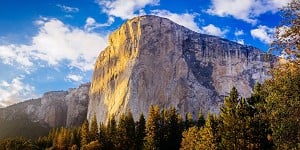In reply to Robert Durran:
> (In reply to smuffy)
>
> In still air, a relatively gradual temperature gradient will develop in the layer of air surrounding a surface, whereas, in a wind, air warmed/cooled by heat flow from/too from the surface is constantly blown away and replaced by more air at the ambient temperature, maintaining a steep temperature gradient. Thus a surface will cool/warm to the ambient temperature more quickly in wind. Note that the final temperature reached by the surface will still be the ambient air temperature; only the rate at which it is reached varies,
in clear skies heat radiation can be lost to space so that the ground is cooler than the ambient air temperature. The wet bulb effect due to evaporation also allows this to occur. this is why neve can form from unconsolidated snow on shady aspects when its a few degrees above freezing but the weather is high pressure.









